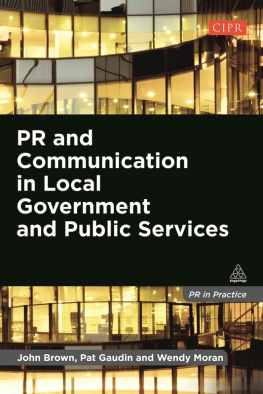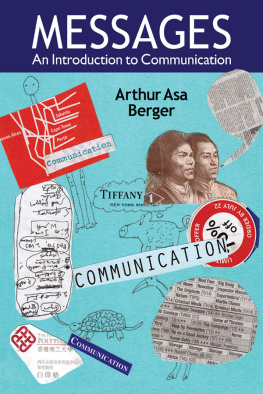Prescribing HIV Prevention
Critical Cultural Studies in Global Health Communication
Global changes in migratory patterns, the increasing health inequalities faced by the poor, the health risks faced by communities at the margins of global societies, and the communicative nature of health problems have drawn additional attention to the relevance of studying health communication processes across global cultures. This series will challenge West-centric ideals of health and human behavior by publishing theoretically provocative, pedagogically critical volumes addressing the intersection of communication principles and practices with health concepts and structures. The intent of the series is foregrounding knowledge that creates openings for transforming structures of injustice and exploitation underlying global health inequalities. Manuscript proposals should be addressed to Series Co-editor Mohan J. Dutta at cnmhead@nus.edu.sg
General Editors
Mohan J. Dutta, National University of Singapore
Ambar Basu, University of South Florida
Series Titles
Volume 1 Prescribing HIV Prevention: Bringing Culture into Global Health
Communication, Nicola Bulled
Volume 2 Neoliberal Health Organizing: Communication, Meaning, and
Politics, Mohan J. Dutta
First published 2015 by Left Coast Press, Inc.
Published 2016 by Routledge
2 Park Square, Milton Park, Abingdon, Oxon OX14 4RN
711 Third Avenue, New York, NY 10017, USA
Routledge is an imprint of the Taylor & Francis Group, an informa business
Copyright 2015 Taylor & Francis
All rights reserved. No part of this book may be reprinted or reproduced or utilised in any form or by any electronic, mechanical, or other means, now known or hereafter invented, including photocopying and recording, or in any information storage or retrieval system, without permission in writing from the publishers.
Notice:
Product or corporate names may be trademarks or registered trademarks, and are used only for identification and explanation without intent to infringe.
Library of Congress Cataloging-in-Publication Data:
Bulled, Nicola, 1981- author.
Prescribing HIV prevention : bringing culture into global health communication /
Nicola Bulled.
pages cm. -- (Critical cultural studies in global health communication; vol. 1)
ISBN 978-1-61132-362-7 (hardback : alk. paper) -- ISBN 978-1-61132-363-4 (pbk.
: alk. paper) -- ISBN 978-1-61132-364-1 (institutional ebook) -- ISBN 978-1-61132-
732-8 (consumer ebook)
1. HIV infections--Lesotho--Prevention. 2. HIV infections--Social aspects--Lesotho.
3. AIDS (Disease)--Lesotho--Prevention. 4. AIDS (Disease)--Social aspects--Lesotho.
5. Communication in medicine--Lesotho. I. Title. II. Series: Critical cultural studies in
global health communication; vol. 1.
RA643.86.L5B85 2014
362.19697920096885--dc23
2014024213
ISBN 978-1-61132-362-7 hardback
ISBN 978-1-61132-363-4 paperback
The gate lock clicked and the car drove away. They were gone. This was the first time our parents had left us alone for an eveningno baby sitters, no staying at a friends housejust three girls, alone. The moment signified our maturation into responsible teenagers, except I was twelve, and my sister and her friend were just turning fourteen. We had been planning the events of this Saturday night all week. We made pizza and rented a movie Sarafina! We understood that Sarafina! was the story of youth in Soweto, the mega-township on the other side of Johannesburg from where we lived in Benoni. We had picked Sarafina! mostly because of Whoopi Goldberg, the American comedian/singer. We loved Whoopi as Dolores Van Cartier, a showgirl turned nun in the film Sister Act . Sarafina! promised to be a similarly uplifting Hollywood-style musical, just with a more local and recognizable feel.
We were horribly mistaken.
The 1992 film Sarafina! , based on the original Broadway production, centers around the riots in Soweto in the late 1970s. Inspired by their teacher, Mary Masombuka (the role played by Whoopi Goldberg On June 16, 1976, an estimated 20,000 students took part in the demonstrations. The event is most well recognized by the iconic image of 12-year-old Hector Pieterson being carried by Mbuyisa Makhubo after he was shot by South African police.
Sarafina! was filmed on location in Soweto and Johannesburg, revealing that not far beyond the bolted doors, barred windows, seven-foot high walls, and electric fence of my modest Benoni home, a war was raging. Soweto was not so much a place to us, more an idea. We had never been there, but knew it to be a place where we should not go. It featured prominently on the nightly news. When the violence was really out of control, the giant, yellow, military-style hippo police vehicles slowly made their way into the danger zones of the townships, tear gas canisters dispersed toyi-toyi-ing crowds, and police (both black and white) brutally beat people with their rubber batons.
The story of Sarafina! offered justification for the uprisings and ongoing violence occurring on a daily basis throughout South Africa during my childhood. The images and the story provided a different lens through which I could see my own world. I grew up in middle class neighborhoods, insulated from apartheid realities. Like many of my childhood friends, I knew nothing about the pass system, did not know who Steve Biko was, thought Nelson Mandela was a terrorist who failed to blow up the Koeberg nuclear power station, and could not identify with the iconic image of him burning his pass in protest against apartheid policies restricting the movements of non-whites. I had come to believe that the systems in place in South Africa were appropriate and necessary. The protests and violence of black youth, as portrayed in Sarafina! , threatened to destabilize the system. I had come to believe that the black youth were the perpetrators of violence and I was the victim. The Sarafina! narrative suggested otherwise. It was not until this moment, watching a collection of singing youth on the screen inspired by their teacher, someone I too admired, that I began to realize that the situation in South Africa was not normal.
This childhood experience reflects the complexity of communication that I attempt to unravel, or at least pull at the strings of, in this book. The structural realities that are present in our everydaythe apartheid-state, poverty, joblessness, the position of women, the threat of HIV infectioninfluence our individual awareness, understandings, and behaviors. Communication is not just about the message or the individual receiver, but rather a far more complex interaction involving the construct of the message and the situational context of the receiver. The ability of Sarafina! to communicate to me the realities of the apartheid state was likely related to a combination of my age at the time; the lack of parental presence; the medium of film; a U.S. film star providing an outsider commentary on my local world; the recognizable locations, geography, and languages; and the defied expectations for an uplifting musical.







